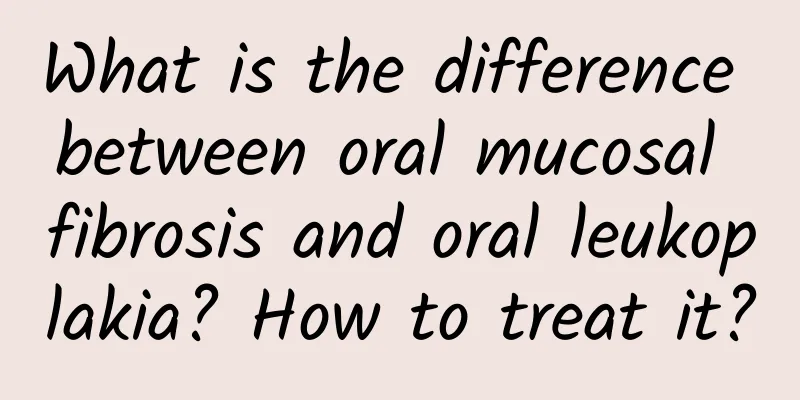What is the difference between oral mucosal fibrosis and oral leukoplakia? How to treat it?

|
Oral leukoplakia and oral fibrosis are both common diseases among stomatology patients. The former is a non-infectious chronic disease that mainly occurs in the middle-aged and elderly population, while the latter mainly refers to the degeneration of oral fibrous tissue and atrophy of the epithelium, which usually occurs in the 20-40 age group. What are the symptoms of these two diseases and how to deal with them? Difference 1: Different symptoms and signs There are no symptoms in the early stages of oral mucosal fibrosis. As the disease worsens, patients will experience symptoms such as oral ulcers, a noticeable burning sensation in the oral mucosa, loss of taste, and pain. As the name suggests, oral leukoplakia is mostly characterized by the occurrence of white patches in the mouth. The plaques are granular and often appear on the floor of the mouth or the tongue. Difference 2: Different pathological causes The causes of oral leukoplakia are related to local irritation, such as frequent smoking and drinking, and chewing betel nuts. There are many factors that induce oral mucosal fibrosis. First, it is directly related to genetic genes. If a direct relative has this disease, the probability of the next generation developing it is much higher than that of the normal population. In addition, it is also closely related to autoimmune diseases and betel nut chewing. Difference 3: Different treatment plans Oral leukoplakia is usually treated with medication, such as vitamin A, cod liver oil, etc.; patients should also receive treatment based on their condition, quit smoking and drinking, and eat less spicy and irritating foods. The treatment for oral submucous fibrosis mainly uses vitamin E, retinoic acid, etc.; it can also be combined with traditional Chinese medicine, mainly choosing blood-activating and blood-stasis-removing drugs, such as angelica, safflower, etc. Therefore, oral submucous fibrosis and oral leukoplakia are two completely different diseases. No matter which one you suffer from, you must take standardized treatment, otherwise it will affect your daily life. It is best for patients to have a light diet, eat more fresh fruits, have a reasonable combination of three meals a day, and pay attention to comprehensive and adequate nutrition. |
<<: Inflated "balloons" are portable "bombs"
>>: How can the elderly prevent intestinal infectious diseases in summer?
Recommend
Is it painful to remove the IUD?
It is quite common for women to wear contraceptiv...
What supplements are good for pregnant women with miscarriage?
If a pregnant woman has a miscarriage, she will b...
8 kinds of Yin-nourishing foods that women should eat
For women, nourishing their own bodies is particu...
Estrogen supplementation
Estrogen is a steroid hormone, which is mainly pr...
Why do girls have loud breathing sounds when they sleep?
In modern society, people are more particular abo...
Can ovarian cysts become malignant?
Every woman should pay attention to the health of...
How many days is a normal menstrual period?
Although education has improved nowadays, there i...
Dizziness "first reaction": Is it Meniere's?
For many friends who suddenly feel dizzy, their f...
Beware! Five hidden signs of Alzheimer's disease
Hidden early signs of dementia (Alzheimer's d...
Are breast nodules scary?
If women develop breast nodules, they need to tak...
Treatment of cervical cysts
Although cervical cysts are not very difficult to...
Average height of Shandong women
With the development and trends of the times, the...
What should I do if there is bleeding during colposcopy?
There are many kinds of gynecological diseases th...
The harm of girls not eating dinner
The pursuit of beauty among contemporary girls ha...
Use kudzu root powder in this way to enlarge breasts
Pueraria powder is a traditional Chinese medicine...









